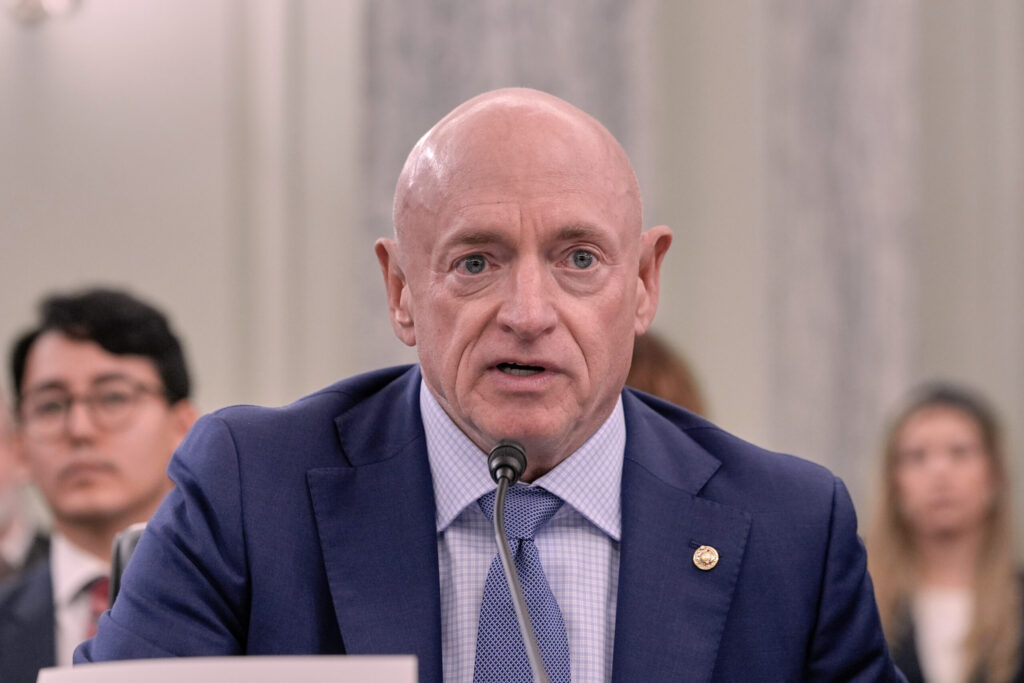Trump signs executive order to establish federal Artificial Intelligence program ‘Genesis Mission’: All you need to know
On 24th November, US President Donald Trump signed an executive order to establish a new federal Artificial Intelligence programme named the Genesis Mission. Modelled after the ‘Manhattan Project’, which catapulted the country to become a major atomic power, this project is meant to mobilise federal data and resources to create AI models with practical scientific impact. “This order launches the Genesis Mission as a dedicated, coordinated national effort to unleash a new age of AI‑accelerated innovation and discovery that can solve the most challenging problems of this century. The Genesis Mission will build an integrated AI platform to harness Federal scientific datasets, the world’s largest collection of such datasets, developed over decades of Federal investments, to train scientific foundation models and create AI agents to test new hypotheses, automate research workflows, and accelerate scientific breakthroughs,” the order reads. Today, the Department of Energy is introducing the Genesis Mission.President Trump is launching this historic national effort to harness the AI computing revolution and double the productivity of American science within a decade. America’s Golden Age of discovery begins now. pic.twitter.com/ZBGCKvax08— U.S. Department of Energy (@ENERGY) November 24, 2025 The Department of Energy has been directed to convert the national lab system into an integrated stack that provides high-performance computing resources, Domain foundation models across physics, materials, bio, energy, AI agents to explore design spaces, evaluate experiments, automate workflows, Robotic/automated labs and production tools for AI-directed experiments and manufacturing, in addition, national-scale AI scientist and AI lab tech as infrastructure. Aggressive timelines, strict deadlines: Trump’s Genesis Mission is a move at integrating AI with America’s scientific resources As per the executive order signed by President Trump, within 60 days, the Department of Energy has to propose at least 20 national challenges in advanced manufacturing, biotechnology, critical materials, nuclear fission and fusion energy, quantum information science, and semiconductors and microelectronics. In addition to directing the DoE to propose national challenges within 60 days of the order’s signing, the American president has also tasked the department with identifying Federal computing, storage, and networking resources available to support the Mission. Within 120 days, Secretary of Energy is directed to “identify a set of initial data and model assets for use in the Mission, including digitization, standardization, metadata, and provenance tracking; and develop a plan, with appropriate risk-based cybersecurity measures, for incorporating datasets from federally funded research, other agencies, academic institutions, and approved private-sector partners, as appropriate.” Moreover, within 240 days, the Energy Secretary has to ensure mapping of all robotic laboratories and automated facilities across national laboratories and production facilities with the ability to engage in AI-directed experimentation and manufacturing. The executive order further states that within 270 days of its date, the Secretary of Energy will demonstrate an initial operating capability of the Platform for at least one of the national science and technology challenges. In a nutshell, the goal of the Genesis Mission is to create a functioning AI-for-science loop within nine months. With this order, the US government has decided to formalise a federal AI stack parallel to the commercial one. The DoE and other concerned authorities have been directed to align agency AI programs and datasets onto this platform, run joint funding calls and prize programs, and build partnership frameworks with external players. This essentially opens doors for private players like Nvidia, OpenAI, Anthropic, xAI, Google, the clouds, biotech and chip companies to become potential co-developers and suppliers for the DoE AI system. The Trump administration has been arguing that American scientific progress has stagnated despite massive federal investments. New drug approvals have declined, scientific outputs per researcher have slumped, hammering innovation, particularly in critical areas like energy and medicine. Reliant on manual experimentation and siloed data, traditional methods are proving to be too slow in the 21st century. Trump administration has viewed AI as a transformative tool to make things better. In July this year, the US government brought the AI Action Plan, which removed regulatory barriers and stressed American leadership. With the Genesis Mission, the Trump administration aims to coordinate the fragmented federal assets with academia and private companies to reduce reliance on foreign nations, especially China for semiconductors, critical minerals and AI technology. The Mission is also aimed at tackling surging energy c



On 24th November, US President Donald Trump signed an executive order to establish a new federal Artificial Intelligence programme named the Genesis Mission. Modelled after the ‘Manhattan Project’, which catapulted the country to become a major atomic power, this project is meant to mobilise federal data and resources to create AI models with practical scientific impact.
“This order launches the Genesis Mission as a dedicated, coordinated national effort to unleash a new age of AI‑accelerated innovation and discovery that can solve the most challenging problems of this century. The Genesis Mission will build an integrated AI platform to harness Federal scientific datasets, the world’s largest collection of such datasets, developed over decades of Federal investments, to train scientific foundation models and create AI agents to test new hypotheses, automate research workflows, and accelerate scientific breakthroughs,” the order reads.
Today, the Department of Energy is introducing the Genesis Mission.
— U.S. Department of Energy (@ENERGY) November 24, 2025
President Trump is launching this historic national effort to harness the AI computing revolution and double the productivity of American science within a decade. America’s Golden Age of discovery begins now. pic.twitter.com/ZBGCKvax08
The Department of Energy has been directed to convert the national lab system into an integrated stack that provides high-performance computing resources, Domain foundation models across physics, materials, bio, energy, AI agents to explore design spaces, evaluate experiments, automate workflows, Robotic/automated labs and production tools for AI-directed experiments and manufacturing, in addition, national-scale AI scientist and AI lab tech as infrastructure.
Aggressive timelines, strict deadlines: Trump’s Genesis Mission is a move at integrating AI with America’s scientific resources
As per the executive order signed by President Trump, within 60 days, the Department of Energy has to propose at least 20 national challenges in advanced manufacturing, biotechnology, critical materials, nuclear fission and fusion energy, quantum information science, and semiconductors and microelectronics.
In addition to directing the DoE to propose national challenges within 60 days of the order’s signing, the American president has also tasked the department with identifying Federal computing, storage, and networking resources available to support the Mission.
Within 120 days, Secretary of Energy is directed to “identify a set of initial data and model assets for use in the Mission, including digitization, standardization, metadata, and provenance tracking; and develop a plan, with appropriate risk-based cybersecurity measures, for incorporating datasets from federally funded research, other agencies, academic institutions, and approved private-sector partners, as appropriate.”
Moreover, within 240 days, the Energy Secretary has to ensure mapping of all robotic laboratories and automated facilities across national laboratories and production facilities with the ability to engage in AI-directed experimentation and manufacturing.
The executive order further states that within 270 days of its date, the Secretary of Energy will demonstrate an initial operating capability of the Platform for at least one of the national science and technology challenges.
In a nutshell, the goal of the Genesis Mission is to create a functioning AI-for-science loop within nine months.
With this order, the US government has decided to formalise a federal AI stack parallel to the commercial one. The DoE and other concerned authorities have been directed to align agency AI programs and datasets onto this platform, run joint funding calls and prize programs, and build partnership frameworks with external players.
This essentially opens doors for private players like Nvidia, OpenAI, Anthropic, xAI, Google, the clouds, biotech and chip companies to become potential co-developers and suppliers for the DoE AI system.
The Trump administration has been arguing that American scientific progress has stagnated despite massive federal investments. New drug approvals have declined, scientific outputs per researcher have slumped, hammering innovation, particularly in critical areas like energy and medicine.
Reliant on manual experimentation and siloed data, traditional methods are proving to be too slow in the 21st century. Trump administration has viewed AI as a transformative tool to make things better. In July this year, the US government brought the AI Action Plan, which removed regulatory barriers and stressed American leadership.
With the Genesis Mission, the Trump administration aims to coordinate the fragmented federal assets with academia and private companies to reduce reliance on foreign nations, especially China for semiconductors, critical minerals and AI technology. The Mission is also aimed at tackling surging energy costs through AI-driven advances in nuclear fusion and efficient manufacturing.









































































